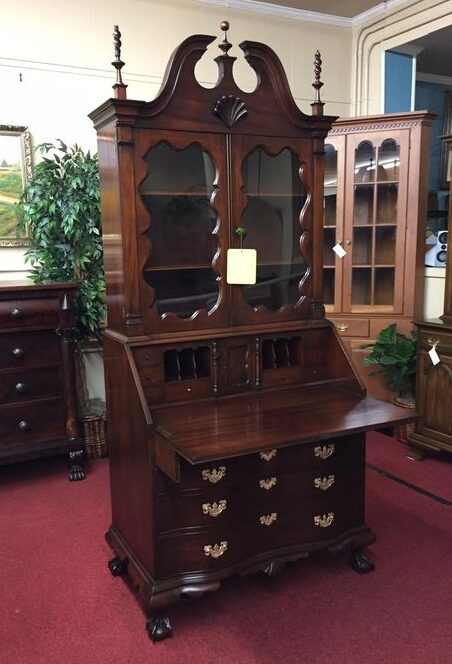Furniture plays a crucial role in the overall design and aesthetics of a home. It not only serves a functional purpose but also adds personality to any living space. For those who are looking to create a traditional and elegant look in their homes, reproduction colonial furniture is an excellent choice. This furniture style is inspired by the designs of the colonial era and features classic design elements such as intricate carvings, turned legs, and handcrafted finishes.
History of Colonial Furniture
Colonial furniture was popular in the 17th and 18th centuries when European settlers arrived in America. During this time, furniture craftsmen created pieces that reflected the styles of their homelands, incorporating elements from different European design traditions. This style of furniture was often made from native woods found in the colonies, such as pine, cherry, and maple. The furniture was designed to be functional, durable, and stylish, reflecting the lifestyles of the colonial settlers.
Reproduction Colonial Furniture
Reproduction colonial furniture is a modern take on the classic furniture styles from the colonial era. Reproduction furniture makers create pieces that are inspired by the original designs, but with a modern twist. These pieces are made using traditional woodworking techniques and materials, incorporating the same design elements as the originals. The result is furniture that is both functional and beautiful, adding timeless elegance to any home.
Design Elements of Reproduction Colonial Furniture
Reproduction colonial furniture is known for its classic design elements, including intricate carvings, turned legs, and handcrafted finishes. These pieces often feature traditional motifs and symbols, such as the ball and claw foot design, which was popular in the 18th century. The furniture is designed to be both functional and aesthetically pleasing, reflecting the craftsmanship and attention to detail that was characteristic of the colonial era.
Materials Used in Reproduction Colonial Furniture
The materials used in reproduction colonial furniture are similar to those used in the original pieces. Native woods such as pine, maple, and cherry are still popular choices, as are high-quality hardwoods like mahogany and walnut. These woods are chosen for their durability, beauty, and the way they take on a rich patina over time.
The Process of Reproducing Colonial Furniture
The process of reproducing colonial furniture is a laborious one, requiring skilled craftsmen who have a deep understanding of traditional woodworking techniques. These craftsmen use hand tools to shape the wood, creating intricate designs that reflect the original pieces. The furniture is then finished by hand, using traditional methods such as staining, waxing, or oiling, to create a rich, warm finish.
Benefits of Reproduction Colonial Furniture
There are many benefits to choosing reproduction colonial furniture for your home. Firstly, the furniture is designed to be both functional and beautiful, providing a classic look that will never go out of style. The furniture is also made from high-quality materials, ensuring that it will last for many years to come. Additionally, the furniture is often handmade, providing a unique, one-of-a-kind piece for your home.
Conclusion
Reproduction colonial furniture remains a popular choice for those who want to add a touch of timeless elegance to their homes. The furniture is inspired by the classic designs of the colonial era, incorporating traditional design elements and materials to create a beautiful and functional piece. Whether you are looking to create a traditional look or simply add a touch of old-world charm to your décor, reproduction colonial furniture is an excellent choice. With its durability, beauty, and handmade craftsmanship, it is sure to become a cherished piece in your home for many years to come.
